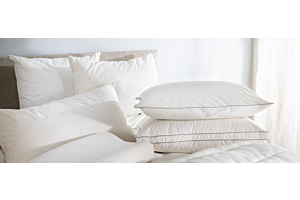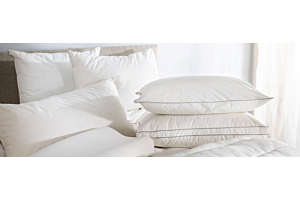Sleeping positions & what they say about you
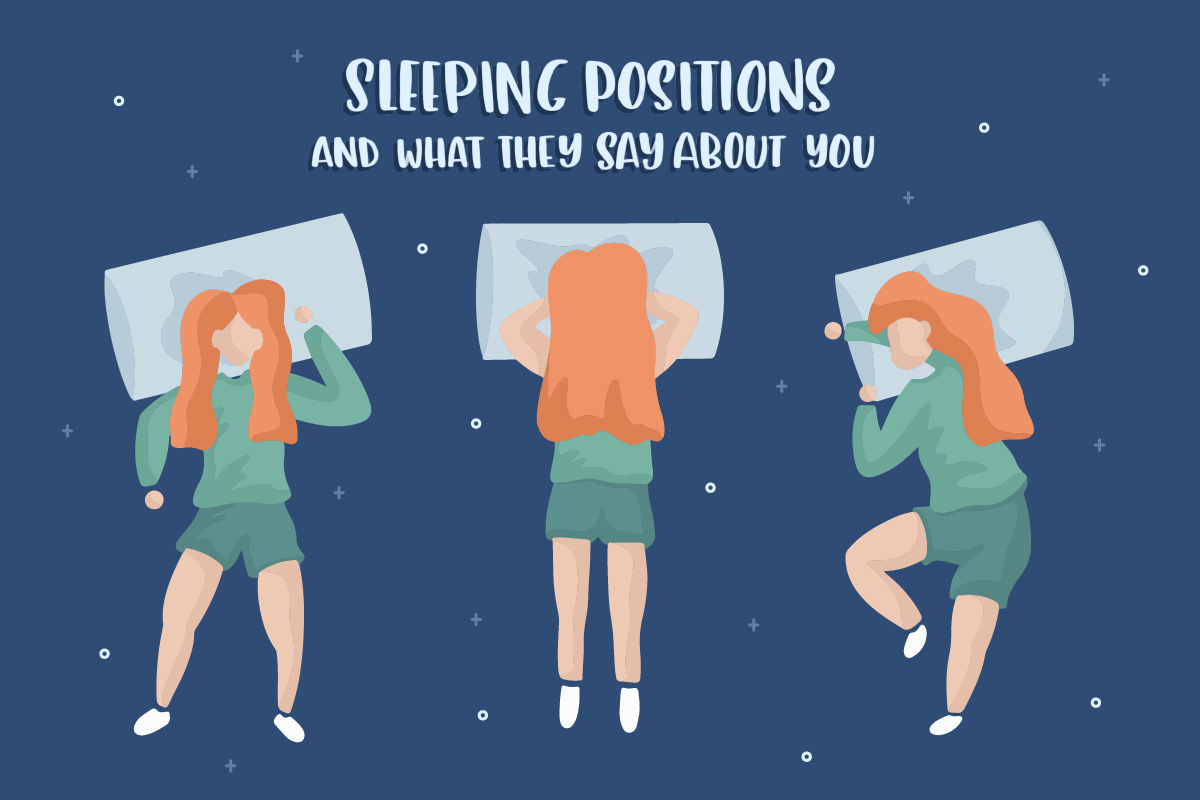
Have you ever stopped to think about what your sleeping position says about you? According to some scientists, our favoured sleeping positions can say a lot about our personality traits. Here’s the lowdown on some of the most common sleeping positions and what they may say about us.
What is the best sleeping position?
There’s no such thing! Each sleeping position has its own benefit – we’re all different and the most important thing is to sleep in a way that works for you. Whichever sleeping position you opt for Soak&Sleep is here to help you sleep better and wake up feeling refreshed and raring to go.
What does your sleeping position say about you?
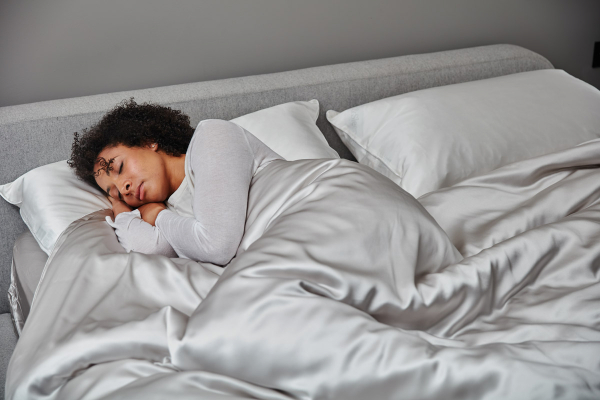
You might think that your sleeping position is the result of nothing more than habit and preference. However, some people believe sleeping positions provide an insight into our individual personalities. Although sleeping positions don’t necessarily correlate to personality in a scientific way, each position does have personality traits associated with it. Analysing your sleeping position can be a fun way to add insight to your own personality and that of those close to you.
Side sleepers
If you’re a side sleeper, you’re in good company with most adults having been found to sleep on their sides. When it comes to side sleeping, there’s no one-size-fits-all with several different side sleeping positions – the ‘log’, ‘foetal’ and ‘yearner’ positions.
The ‘log’ describes someone who sleeps on their side with their arms straight by their sides and with their legs extended. In contrast, the ‘foetal’ sleep position is where the sleeper curls up into a ball on their side with their arms and legs bent. It’s named after the position that babies take while in the womb. There are variations on the ‘foetal’ position with some people adopting a more relaxed, looser pose, known conveniently as the ‘semi-foetal’ position. Interestingly, more women adopt this pose than men. Lastly, the ‘yearner’ describes someone who sleeps on their side with their arms outstretched, as if yearning for something that’s slightly out of reach.
What sleeping on your side says about you?
Those who favour the ‘log’ position are said to be easygoing, trusting and just a touch gullible. ‘Foetal’ sleepers are more likely to be tough on the outside with a sensitive centre – they can to be shy at first but quickly relaxing once they know someone better. The ‘yearner’ is said to be suspicious and cynical as well as being slow to make up their mind about things.
Pros and cons of sleeping on your side
Sleeping on your side provides some surprising health benefits. Top of the list is the way sleeping on your side can help reduce back and joint pain thanks to the way it aligns the spine. Side sleeping, especially on your left, can also help your digestive health by using gravity to help move waste through your colon. It also reduces the chances of heartburn and helps reduce snoring. Perhaps most interestingly of all though, there’s a chance that sleeping on your left-hand side can boost brain health too, helping prevent neurological diseases such as Alzheimer’s.
That said, side sleeping isn’t all good news. If you suffer with shoulder or jaw pain, this sleeping position can place extra pressure on these body parts, irritating pre-existing conditions and causing tension.
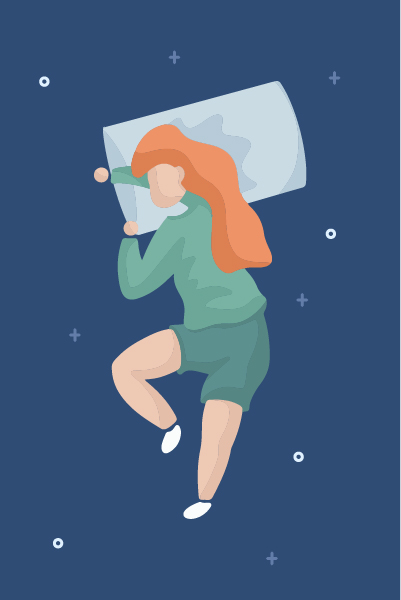
How to sleep better on your side
Want to benefit from sleeping on your side? Then it pays to set yourself up properly. As with front and back sleeping positions, your most powerful bedtime ally is a pillow. Here’s how…
- Choose a pillow that supports the distance between your neck and shoulder to provide good support. People with broader shoulders may need two pillows to provide the right level of support. A firmer pillow is better for side sleepers as you want to keep the head level with the spine, instead of letting it sink into a soft, less supportive pillow.
- Placing a pillow between your knees can help relieve pressure on hips and support your lower back. Shop our knee pillow here.
- Make sure your mattress is providing enough support. Memory foam mattresses are great for side sleepers due to the way they cradle your body and support a neutral sleep position. If you’re not in the market for a new mattress, a memory foam mattress topper is a more affordable alternative to add some extra support to an existing good quality mattress.
Back sleepers
Prefer to sleep on your back? You’re in good company. It’s the second most popular sleep position and experts believe that around a third of our sleeping time is spent on our back. The two most popular back sleeping positions are the ‘soldier’ and the ‘starfish’. The ‘soldier’ sees the sleeper lying straight with their arms by their sides and their legs straight, while in contrast, the ‘starfish’ lies with their arms and legs outstretched.
What sleeping on your back says about you?
People who sleep on their backs are believed to be self-confident, with folk who sleep in the ‘soldier’ position thought to be quiet and reserved, with high standards. In contrast, starfish sleepers are said to value friendship, be good listeners and to be quick to help others.
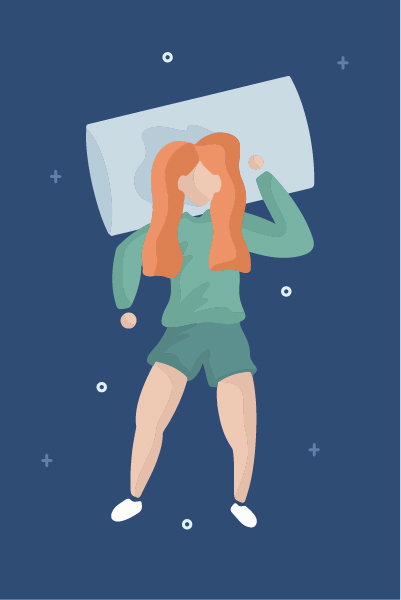
Pros and cons of sleeping on your back
If you’re positioned correctly, sleeping on your back can be incredibly beneficial. It’s said to help prevent wrinkles because the skin is kept away from the pressure it would endure if pressed against a pillow while sleeping on your side or front. Back sleeping is known to help prevent reflux and indigestion, especially if you use a pillow or wedge to raise your head and upper back. Sleeping on your back can also help improve spinal alignment if you use the right pillows to support your neck and spine.
However, there are disadvantages to sleeping on your back. The biggest issue is snoring, something that long-suffering partners of back sleepers will no doubt attest to. Back sleeping can trigger snoring because of the way it can cause the tissues at the back of your tongue and soft palate to collapse, causing the vibrating noise we know as snoring.
Sleeping on your back may also trigger back pain, especially in the lower back. That’s because of the way this sleeping position can cause a flattening of the natural curve in the spine.
How to sleep better on your back
- Sleeping better on your back comes down to the support you use. Choose a good pillow that supports your neck and head and you’ll wake up comfortably while minimising back problems and the possibility of snoring. The best pillow for back sleepers is one that’s relatively low profile but supportive enough to take the weight of the head.
- A wedge pillow can be a real asset to back sleepers who suffer with reflux or snoring because of the way it raises your upper body, preventing the tissue collapse in the throat that causes snoring. The slight elevation also makes it more difficult for stomach acid to rise up into the oesophagus, helping prevent reflux.
- Using a small pillow under your knees can relieve pressure on the lower back, helping you sleep more comfortably and wake with fewer aches and pains.
Front sleepers
Like to snuggle up on your front? Then you’re something of a rarity. Stomach sleeping is the least popular sleep position, perhaps because of the way it demands so much flexibility from our bodies. This also explains why children and younger adults are more likely to sleep on their fronts than older adults, they tend to have better flexibility. The most popular stomach sleeping position is ‘freefall’. In this position, sleepers have their heads turned to one side and their hands in line with their heads.
What sleeping on your front says about you?
There are a range of views about front sleepers. Some researchers claim front sleepers are more anxious and compulsive than other sleepers, while others believe stomach sleepers to be sociable and outgoing, although easily unsettled by criticism.
Pros and cons of sleeping on your front
There’s good reason for sleeping on your front being less popular than other sleep positions. This sleep position puts extra pressure on the spine which leads to discomfort and pain in the morning. Sleeping on your front can also lead to increased facial wrinkles thanks to the extra pressure on your face as you sleep.
However, sleeping on your front does seem to help resolve snoring. When you sleep on your stomach, gravity prevents the soft tissue collapse that causes snoring when sleeping on the back. Stomach sleeping is also said to be helpful for digestion issues.
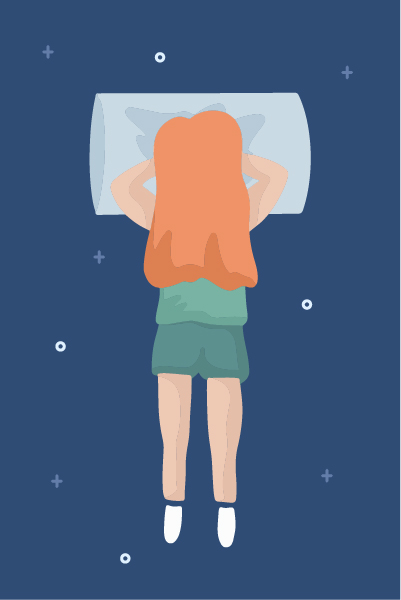
How to sleep better on your front
Taking a few steps to better support your spine while you sleep will mean you can continue to sleep on your front while protecting your spine and joints.
- Use a firmer mattress to support your spine. A softer mattress encourages a downwards dip in your spine which can cause pain. If a new mattress is out of the question, using a thin pillow under the hips to correct this dip helps reduce pressure on your lower back.
- Use a thin pillow to minimize neck strain and back compression.
- Try to avoid twisting your head. If possible, aim to prop your forehead on a pillow to keep your head and spine in a neutral position while you sleep.
Sleeping positions FAQs
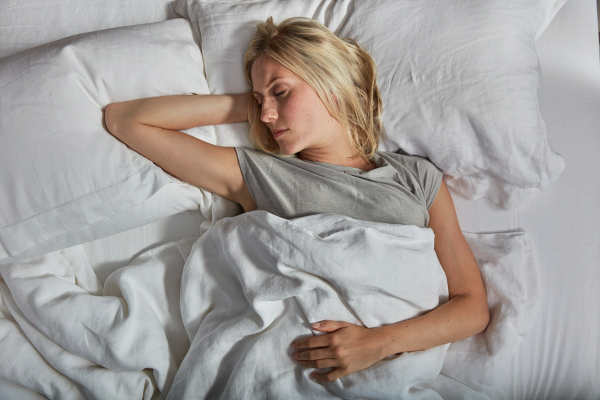
How should you properly sleep on your back?
To sleep properly on your back you need to choose a pillow that’s not too high or too low. If a pillow is too high, it will push your head forwards as you sleep, if it’s too low it will allow your head to loll backwards. This might not seem so bad, but just imagine walking around all day with your head pushed forwards or lolling back – you’d quickly end up with neck and back pain.
Once your head and neck is supported, make sure your lower back is cared for too. Depending on your body, you may find sleeping with a pillow under your knees adds just enough support to take the pressure off your lower back.
Do back sleepers need a pillow?
Although some people may find they can sleep comfortably on their backs without a pillow, experts recommend that back sleepers use a low height pillow to support their head and neck.
What is the best mattress for side sleepers?
Side sleepers will benefit from a medium firmness mattress that provides support while letting shoulders and hips comfortably sink into the mattress for good spinal alignment. Memory foam mattresses respond to body heat and pressure meaning they adapt perfectly to cradle side sleepers as they slumber - our Cooling Memory Foam Mattress is a great option.
How can I sleep on my side without hurting my shoulder?
If you have been experiencing shoulder pain for some time (more than a few days) we’d suggest you speak to a medical professional. However, if you’re suffering from something temporary such as a pulled muscle or bruised shoulder, then read on…
The best way to sleep on your side without hurting your shoulder is to switch sides for a night or two or sleep on your back until your shoulder is back to its old self. Longer term, make sure you’re using enough pillows to elevate your head and neck so they’re in line with your spine. This will help relieve some of the pressure on your shoulder. It’s also important to choose the right sleeping surface. Choose a mattress or mattress topper that has enough give in it to allow your shoulder to ‘sink’ into the mattress slightly, helping relieve the pressure on your shoulder.
What pillow should front sleepers use?
There are two schools of thought here. Number one is that front sleepers should choose a soft, thin pillow that allows them to rest their heads without pushing it backwards as they rest. The other thought is that front sleepers should choose a slightly higher pillow that they can rest their foreheads on as they sleep. This allows them to sleep face forwards, placing less pressure on their spine for a more comfortable night’s sleep.



